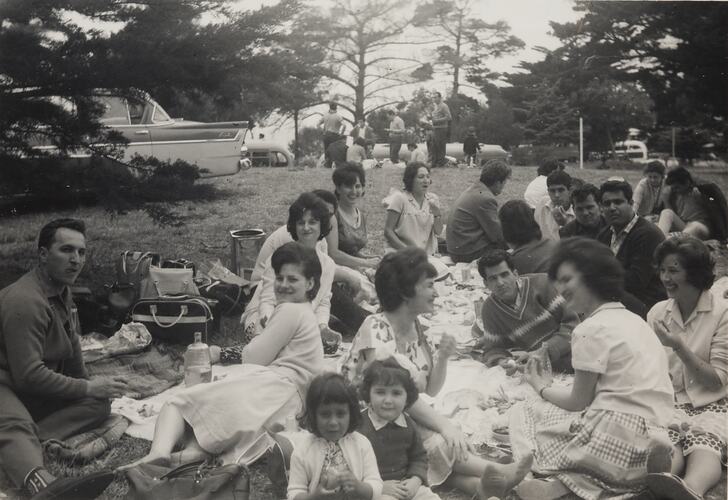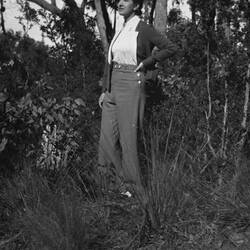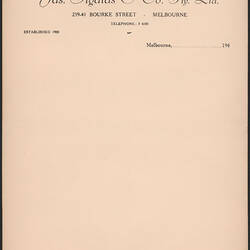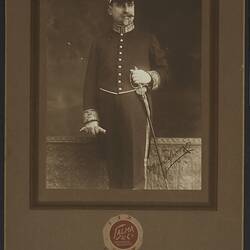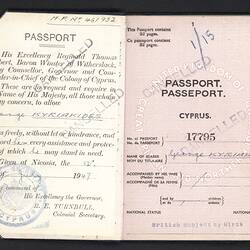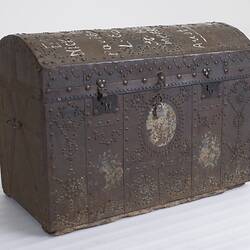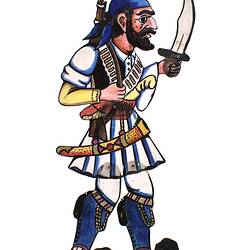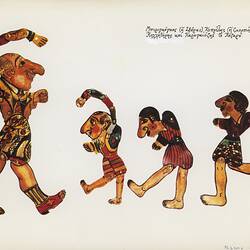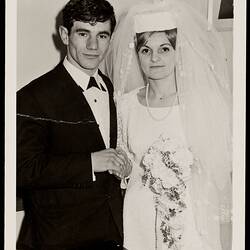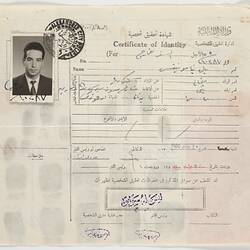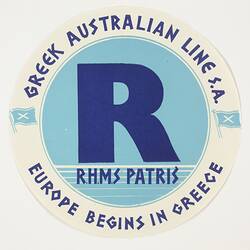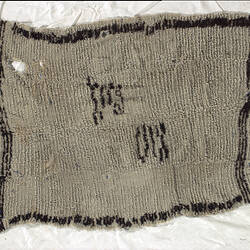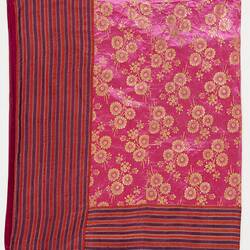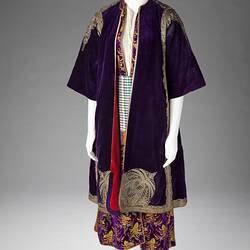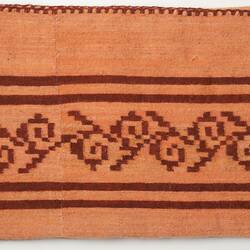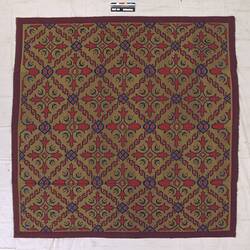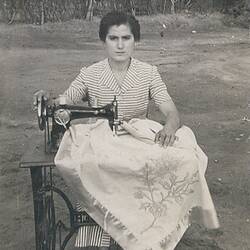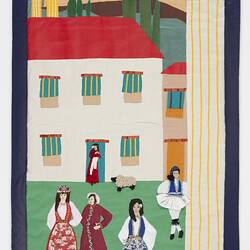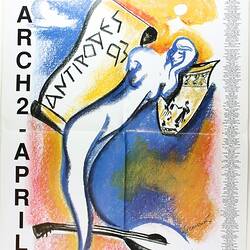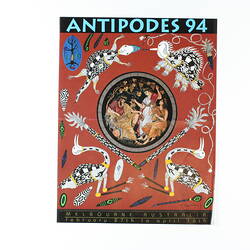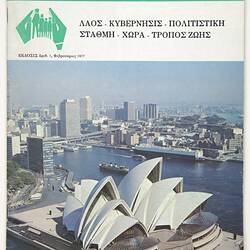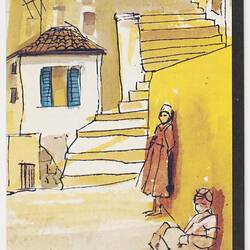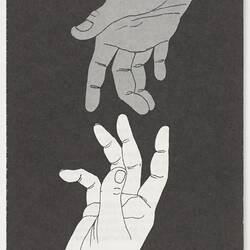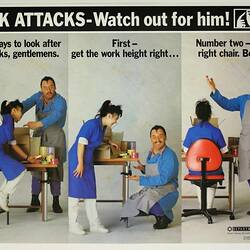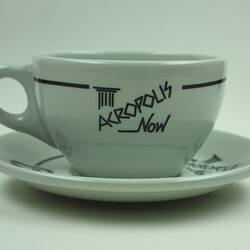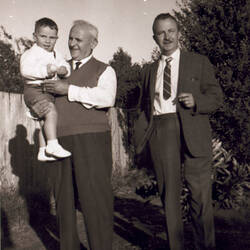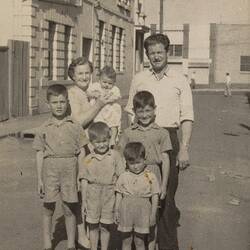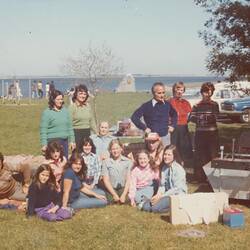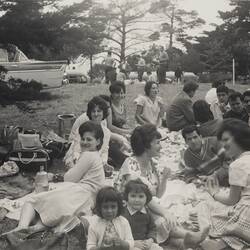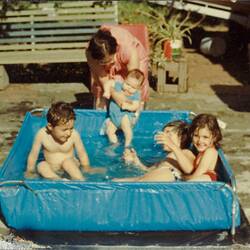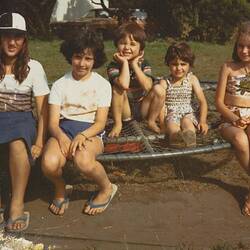Summary
The Museum holds a significant collection relating to the migration of people of Greek heritage and subsequent generations. Over 500 items relate to the stories of Greek individuals, families and communities - the earliest dating back to the 1880s and the most recent to the 1980s.
Introduction:
The Museum has been developing collections relating to migration and settlement in Victoria since 1990. These collections, which number over 10,000 items, consist of objects, documents, photographs, and oral histories, representing a diversity of cultural backgrounds, experiences, and time periods. They include the personal things people have brought with them, the documents they have needed to present, the souvenirs from long voyages, the objects of maintaining cultural traditions and identities, and the products of creative practices.
Some of the most significant material relates to the migration of people of Greek heritage and subsequent generations. Over 500 items relate to the stories of Greek individuals, families and communities - the earliest dating back to the 1880s and the most recent to the 1980s. These stories demonstrate the richness of cultural, social and community life of Greek migrants and their descendants in Victoria, and the diversity within the Greek community itself.
This article focuses on some of the key collection items and the important themes they explore, which can all be found on Museums Victoria Collections online. For a brief history and census data on Greek communities in Victoria, visit Origins on the Immigration Museum website.
Family Stories:
Two of the Museum's most significant Greek collections document the experiences of two families, the first generation of whom arrived in the early 1900s. The Sigalas and Kyriazopoulos family stories are rich in material culture and in the themes these collections explore. Over 150 objects, documents and photographs bring to life the movement of people across time and place (including Sikinos, Thrace, Egypt, and Bulgaria) demonstrating that migration can be a continuous experience for some people, shifting from country to country until finding the right place to settle.
These family stories also reveal: the chain migration by which one family member (usually male) established himself before sending for the rest of the family; the process of men finding brides in the 'old' country in order to establish families in the new; and the strong ties to homelands which draw some people back again and again. These families established successful businesses and professional careers and the women were strong, educated and active in the cultural and social life of Melbourne.
Business cards and letterheads record the family businesses, clothing brings to life the 1920s era of women's fashion, theatre plays in Greek language illustrate the diversifying of Melbourne's cultural life, and personal and official correspondence reveals relationships of love as well as the bureaucracy of citizenship and diplomacy.
From the richness of large and varied family collections to the power of a single object. The collection holds a simple shepherd's blanket, likely woven in 1886 by a woman in a small village in northern Greece. The blanket travelled with its owner Yannis Vlahos from Greece to Egypt and finally to Melbourne in 1966 with the next generation as a special memory object of past people, places and skills.
The Work of Women's Hands:
The Museum's collection holds some beautiful examples of Greek migrant women's artisan skills, most precious items brought to Australia by migrating women; one a textile created in Melbourne to remember homeland.
Maria Markos, who grew up in Castellorizo, had remarried in 1921 after her first husband was killed by occupying forces. They migrated to Melbourne in 1922 and Maria brought with her a beautiful hand-made regional costume from Castellorizo and a silk bedspread as part of her 'prika' (trousseau). The highly decorated, multi-piece costume was traditionally worn from engagement day and subsequently to celebrations and even daily activities.
Irene Soumilas arrived in Australia in 1958 from the island of Lefkas, one of many young women came as the result of arranged marriages. With her she brought 66 blankets, undergarments, and embroidered table linen, packed into two trunks - a substantial 'prika' which she kept and treasured during some difficult times until donating it to the Museum.
A hand loom-woven rug and hall runner demonstrate the skills and patience of Aphroditi Pandazi. Created in Kalohori, her village in Larissa, it took 16 year-old Aphroditi six months to produce these items which she later brought to Australia when she migrated.
While all these items are the work of women's hands in their home country, a banner made in 1987 at the Migrant Women's Learning Centre in Collingwood, symbolises the importance of the creation of opportunities for migrant women to come together and find companionship and connection. One of six banners representing different countries of origin, the Greek banner illustrates the memories of homeland the makers held dear.
Small Businesses:
Many Greek migrants established a myriad of small businesses across Victoria - enterprises which often involved entire families.
George Kyriakides migrated to Melbourne from Larnaca, southern Cyprus in 1948 where he had been apprenticed to his father as a silversmith. In 1949 he married Silvia Sarandis, the daughter of Greek migrants and he went on to establish his own wholesale silversmithing business, the Saracen Plate company in Carlton - supplying such clients as Myer and Prouds Jewellers. The family donated a collection of tools, retail samples, documents, product catalogues, and photographs which enables the documenting of this small business' activities from production to sale and distribution, as well as the passing on of skills from generation to generation.
The various work enterprises undertaken by brothers George and Nick Karathanasopoulos are centred around family photographs and a beautiful trunk brought by Nick when he returned to Australia with his wife and daughter after first having arrived in Australia with George from Patras during the 1920s. Nick would open fish and chip shops in South Melbourne and Middle Park in the 1940s and 1950s; George continued his trade as a shoe repairer in the 1920s until opening the Pavilion Tea Rooms in St Kilda where his wife Irene (originally from Sikinos) also worked serving light refreshments. George sold the Tea Rooms in 1950 (which would become the Stokehouse restaurant) and opened a milk bar in Acland Street, later purchasing the Kenya Coffee Lounge in Bourke Street and then a delicatessen in Ormond. This story illustrates the multiple businesses Greek migrants established, adapted and sold.
Cultural Traditions:
Migrants and subsequent generations frequently engage in the maintaining, adapting, and transforming of their cultural practices in their new homeland. This connects people to their countries of origin, creates communities to share and celebrate familiar traditions and activities, and establishes new rituals in which the broader community can participate.
One of the museum's most culturally significant collections is the Greek Shadow Puppet Theatre (Karaghiozis) which had belonged to master puppeteer Dimitri Katsoulis. It includes 32 shadow puppets and 170 props, set backdrops, technical tools and stage equipment. Dimitri migrated to Melbourne in 1974, having trained in Greece as a film and theatre actor and technician. He became the primary exponent of this famous form of Greek puppetry, using the platform to explore contemporary issues facing migrants.
The museum also holds a small collection of promotional materials relating to the annual Antipodes Festival - a program of Greek cultural events which was first held in Melbourne in 1987 and focused around the city's 'Greek precinct' in Lonsdale Street. The items enable the representation of this significant event in the Greek community's calendar, documents the kinds of activities held, and the changing design and iconography featured on the posters and programs.
Stories in a Document:
No migration collection would be complete without the documents which portray the process negotiated by people over time to migrate to Australia. Passports, identity documents, health booklets, and application correspondence all reveal the bureaucracy of migration, at both places of departure and destination. Small photos often attached to these documents also add a touch of humanity to what can be quite de-humanising items.
Fani Nitsou and Iraklis Mangos had met on the ship Patris during their voyage to Australia in 1964. Fani's parents had suffered greatly during the civil war in Greece and her own early years in Melbourne working in a shoe factory were difficult. But in 1967 she again met Iraklis, and they fell in love and married. Their passports, tickets of passage, vaccination certificates and photographs provide a window into this story of struggle and love.
A very different but highly evocative document belonged to John Neamonitis who was born in Egypt, his parents having relocated there from Athens in the 1930s. John decided to migrate to Australia in 1955 as he felt like an outsider in Egypt - although his subsequent early time in Queensland did not address this sense of not belonging for him, but he would find his home in Melbourne. John's certificate of identity symbolises his desire for statehood and belonging, his spirit of courage and adventure in his search for a better life, and the complex experiences of separation, loss, guilt, regret, hope and contentment commonly experienced by migrants. The handprint on the document offers a tangible even visceral connection to John, which transcends time.
Crossing the Equator:
One of the most memorable experiences for many post-World War II migrants is the ship voyage. For some people it was the first time they had left homelands and represented an adventure, a holiday. For others it is remembered as escaping the trauma of war and the early troop ships were often less than salubrious. But many of those who travelled on the more comfortable and purpose-built ocean liners of the 1950s and 1960s remember the experience with affection.
The Museum's collection holds many items relating to the Chandris Greek shipping line and its ocean liners the Patris, Ellenis, Australis, and Seascape. Ship souvenirs, menus, programs, newsletters, baggage labels and passage tickets enable the representing of these ships, the diversity of the passengers they carried and the collective memories shared.
Social Trends:
Multiculturalism, cultural stereotypes, and reclaiming identity - all important issues that can be explored through objects in the museum's Greek migration collections.
The evolving government policies of multiculturalism from the 1970s saw more support for language translation services. A leaflet 'The Racial Discrimination Act and You' published in 1983 in several languages, including Greek, explains public access to support from the Australian Human Rights Commission. It demonstrates the growing recognition of the need by all tiers of government to provide multi-lingual resources in order to improve community access and equity. A booklet entitled Australia 2 published in Greek language in 1977 explains employment, housing, education, social security and taxation to prospective migrants from Greece. A leaflet entitled the 'Greek Curriculum' and published around 1981 by the Victorian Department of Education, provides information about Greek language and culture curriculum for school students.
On the other hand a series of government posters about workplace safety utilises comedian Mark Mitchell's television character Con the Fruiterer, which presented a stereotype of a 'typical' Greek greengrocer. The public discourse about stereotyping, racism and cultural appropriation has become increasingly nuanced since the 1980s and more critical of this kind of representation, even in a comedy context.
The question about who is entitled to represent whose culture was taken up by the writers and actors of the popular 1980s stage show 'Wogs out of Work' and television series 'Acropolis Now', which was set in a Greek bar in Melbourne. It was created by Nick Giannopoulos, George Kapiniaris and Simon Palomares who also starred in the show along with Mary Coustas, and other non-Greek actors who played out a constant clash of cultures, behaviours and personalities. The collection holds a cup, saucer and plate produced as promotional merchandise and was acquired in order to provide a platform to explore this important shift in Australian theatre and television, when Australians of diverse cultural backgrounds were developing comic representations of their own cultural traditions, attitudes, behaviours and languages as an act of reclamation.
Conclusion:
The Museums Victoria Greek migration collections demonstrate the important role material culture plays in documenting migrant experiences, so diverse when even seemingly from one country of origin. Every person has an individual story and objects can represent courage, hope, skill, disappointment, sadness and achievement. Objects also trace shifts in how governments have administered migrants, and developed multicultural policies; and social changes in how Greek migrants have been represented in popular culture - and how they have represented themselves. It is a collection that will continue to evolve.
To explore many more items from this collection, add 'Greek immigration' to the MV Collections key word search.
More Information
-
Keywords
-
Authors
-
Article types
